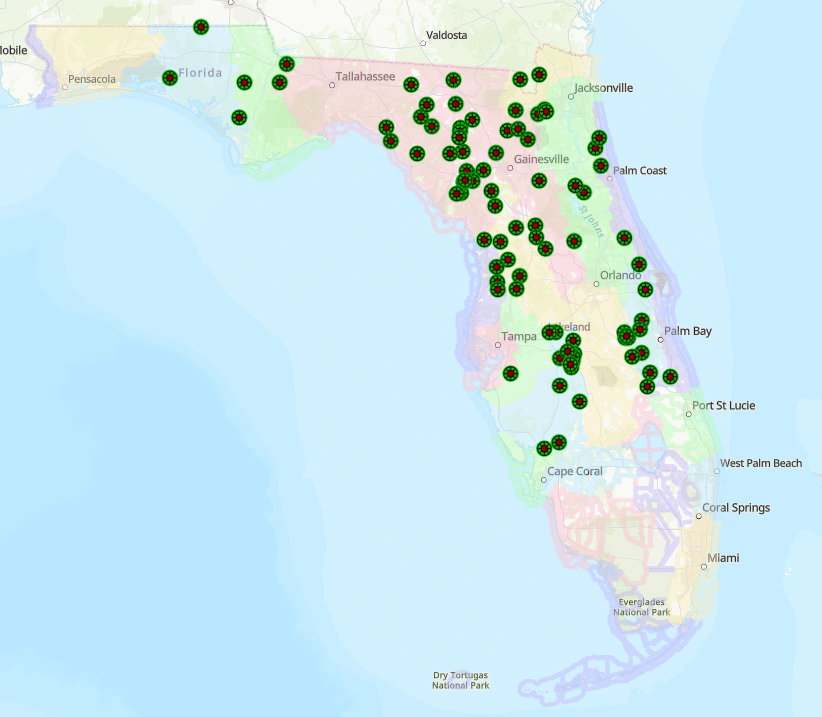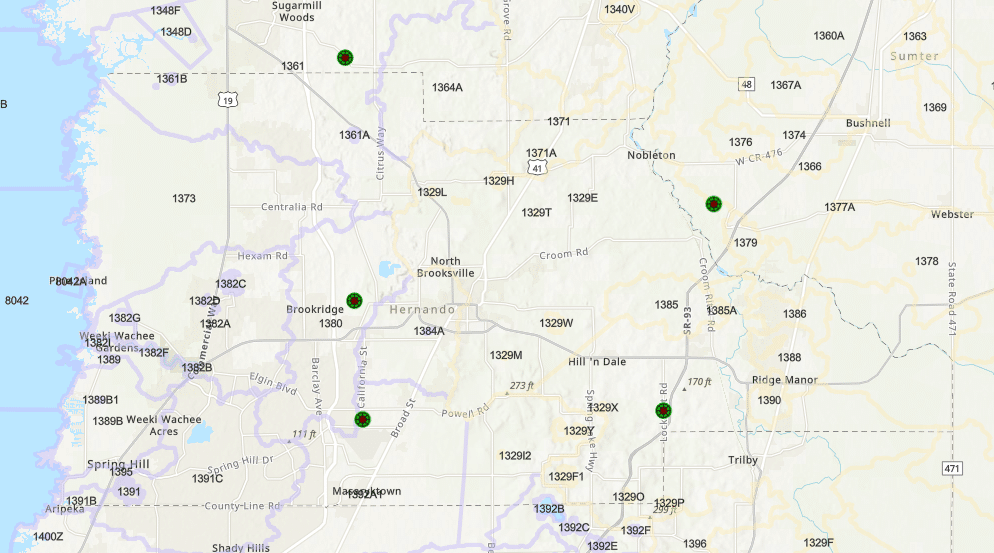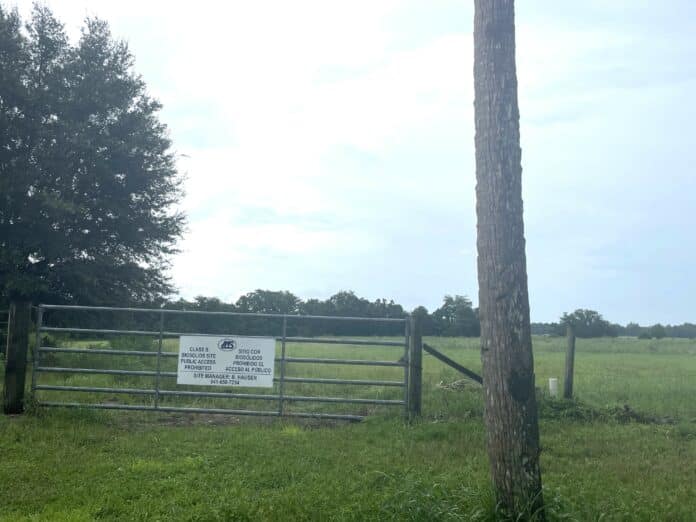By Alayna Wagers and Rocco Maglio
Across the street from both Nature Coast Technical High School and Chocachatti Elementary lies the Appalachian Material Services (AMS) Inc. Nordgren Biosolids Land Application Site. The grassy pasture is the site of the class B Biosolids wastewater treatment facility, which has been present at this location since at least January 1993, with a common complaint of the reoccurrence of foul odor at the site.
Disposing of the waste removed from septic tanks is a challenge. Septic companies come out to homes and pump the septic solid waste into trucks, but it still has to be disposed of in some manner. Biosolid sites serve as the “landfills” for these solids pumped out of septic tanks.
According to the EPA, sewage sludge and biosolids are interchangeable terms for a byproduct of wastewater treatment separation. At a class B categorization, the biosolids site adopts a treatment of septic waste with a pathogen reduction method of adding lime to achieve stabilization or a similar process, as regulated by the U.S. Environmental Protection Agency’s Process Design Manual for Sludge Treatment and Disposal. The EPA states, “pathogens may exist when requirements are met under 40 CFR Part 503 for Class B biosolids, which is why EPA’s site restrictions that allow time for pathogen degradation should be followed for harvesting crops and turf, for grazing of animals, and public contact.” Pathogens can include viruses.
The UF/IFAS article series titled “Florida Biosolids” explains that in Florida, biosolids are divided into three classes: Class AA, Class A and Class B. “The classes are based, in part, on the degree of pathogen reduction. Although all biosolids classes have been treated to substantially reduce pathogen indicators below levels typically found in manure, Class AA biosolids have the least.”
The EPA additionally maintains that the presence of biosolid odors themselves does not necessarily pose a threat of harm to human health or the environment but does describe them as nuisance odors, of which the Nordgren site has plenty. The site has had a variety of odor complaints over the years, dating back to at least 2012, but with potential non-compliance with the EPA as recently as May of this year.
Non-compliance from the recent Compliance Evaluation Inspection included single-event violations of overloading nutrient loading limits and missing advisory signs identifying the site. Upon visiting the site in August, new signage can be found on the pasture gates to better identify the site and provide information to the public.
What may be most interesting, aside from any particular public health or safety risk, is that the EPA published in their Process Design Manual for Sludge Treatment and Disposal an expectation of nuisance reduction, saying, “Courts have ordered municipalities to pay damages or cease operation when wastewater solids treatment processes have been proven to be the source of nuisances such as noise and odor…Since most NPDES permits specify that treatment plant operations be nuisance free, this is a goal which designers and operators must strive to achieve.”
The last recorded odor nuisance complaint mentioned in the recent Compliance Evaluation Inspection was in November 2022. The site has had a slough of odor complaints and site warnings in its over 30-year history, although they seem to have decreased in more recent years with the application of some new treatment techniques. That being the utilization of “the Fogmaster Micro-jet drum mounted misting system, which uses an odor reducing product, Cherry Sewer Sweetener,” as written in AMS Inc.’s response to an odor warning from 2022.
There are two other Class B biosolids sites in Hernando County: a 26.7-acre site on Foxfire Rd. operated by Cliff’s Septic Services, which also functions as a public access restricted agricultural site and a 447.79-acre site on Lockhart Rd. called Melton Ranch. The application area on Lockhart Rd. is used to grow bahia grass for cattle grazing. (Cattle are not allowed into the pasture until 30-days after biosolids application.)
AMS Inc. manages both the Lockhart Rd. facility and the Nordgren facility. The Nordgren Biosolids Treatment Facility (BTF) also lime-stabilizes biosolids that are spread at the Lockhart Road facility.
The facility on Firefox Road is permitted as a Septic Management Facility (SMF) which uses the lime stabilization method for the treatment of “food establishment sludge” and “domestic septage” for Class B land applications.
The Southwest regional EPA district office can be contacted with complaints and compliance of the wastewater treatment facilities in our area. Their number is 813-470-5700.



